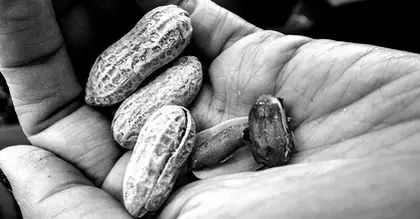
- Antibiotic resistance is a pressing global issue, resulting in millions of deaths annually.
- Recent research has revealed that fine particulate matter (PM2·5), often found in air pollution, exacerbates the problem by contributing to antibiotic resistance.
- The analysis also projects the alarming toll of premature deaths caused by antibiotic resistance linked to PM2·5, prompting a call for more stringent air quality standards and a reevaluation of public health strategies.
In this global analysis, published in
The aim was to assess the influence of a specific type of tiny pollution known as PM2·5 on antibiotic resistance.
The researchers gathered information on a range of potential factors, including air pollution, antibiotic usage, sanitation services, economic conditions, healthcare expenditure, population size, education levels, climate, year of study, and geographical region.
The data used in the study were sourced from multiple references such as ResistanceMap, European Centre for Disease Prevention and Control Surveillance Atlas (which provide information about antibiotic resistance), and PLISA Health Information Platform for the Americas.
To understand how PM2·5 affects antibiotic resistance, the researchers utilized both univariate analysis (examining single factors) and multivariable analysis (considering multiple factors together).
The researchers also projected future trends related to global antibiotic resistance and premature mortality based on various scenarios.
For instance, they looked at scenarios like a 50% reduction in antibiotic use or keeping PM2·5 pollution controlled at 5 μg/m3. These projections extended until the year 2050.
The team of researchers worked with a final set of data that included more than 11.5 million tested samples.
They examined information about antibiotic resistance from nine different types of harmful germs and 43 different antibiotics.
They found strong connections between PM2·5 pollution (tiny particles) and antibiotic resistance that were consistent worldwide. These connections got stronger over time.
The researchers estimated that antibiotic resistance caused by PM2·5 pollution led to about 0.48 million premature deaths and 18.2 million years of life lost globally in the year 2018.
The World Health Organization (WHO) suggests that PM2·5 pollution in the air should be limited to 5 micrograms per cubic meter (5 μg/m3).
If this target is met by the year 2050, it could potentially reduce antibiotic resistance by around 16.8% and prevent about 23.4% of premature deaths related to antibiotic resistance.
This study is the first one to show how PM2·5 pollution is connected to antibiotic resistance in people all around the world.
These findings open up new ways to think about controlling antibiotic resistance by taking care of the environment.
Co-author of the research, Mark Holmes, professor of microbial genomics & veterinary science at the University of Cambridge, spoke to Medical News Today, saying, “there is a correlation between levels of a particular kind of small particle pollutant and antibiotic-resistant levels (i.e. when we see high levels of pollution we also see higher levels of antibiotic resistance).”
“The analysis we performed accounts for differences in other likely influences such as antibiotic use, healthcare expenditure, etc. Our study provides no information as to why this association occurs,” said Prof. Holmes.
Dr. Zeeshan Afzal, health content advisor at Welzo, who was not involved in the research, told MNT that “antibiotic resistance is already a concerning issue, and identifying new environmental factors contributing to it can greatly enhance our understanding and control strategies.”
“The paper investigates a lesser-known aspect of PM2.5 pollution, which is already notorious for its adverse health effects,” Dr. Afzal explained.
“By drawing a connection between PM2.5 pollution and the spread of antibiotic resistance, the paper expands our knowledge about the consequences of poor air quality. The extensive dataset used (over 11.5 million tested isolates) across 116 countries over nearly two decades lends considerable weight and validity to their findings. The usage of multiple predictors and a wide variety of sources for data collection suggests a comprehensive approach.”
— Dr. Zeeshan Afzal
Dr. Afzal pointed out that “for the public, this research highlights another dimension of the dangers of air pollution.”
“Beyond the immediate health effects of PM2.5, people can now appreciate its role in propagating antibiotic resistance, which has long-term implications for global health,” he said.
“For patients, especially those with compromised immune systems or those in areas with high air pollution, there may be increased vulnerability to antibiotic-resistant infections. This understanding could drive better diagnostics, tailored treatment plans, and preventive measures.”
— Dr. Zeeshan Afzal
Dr. Afzal also noted the public Health and economic implications of this research, saying “this research could prompt governments and public Health bodies to intensify efforts to reduce PM2.5 pollution, knowing that controlling PM2.5 levels not only prevents respiratory and cardiovascular diseases but also checks the spread of antibiotic resistance.”
From an economic perspective, according to Dr. Afzal, the research “provides concrete figures on the economic impact of premature deaths due to antibiotic resistance propelled by PM2.5.”
“This could serve as a crucial data point for policymakers when weighing the economic benefits of industrial growth against the health and economic costs of air pollution,” he said.
In summary, Dr. Afzal highlighted that “this research provides a fresh perspective on the interplay between environmental pollution and microbial resistance, emphasizing the need for a holistic approach to tackle global health challenges.”





